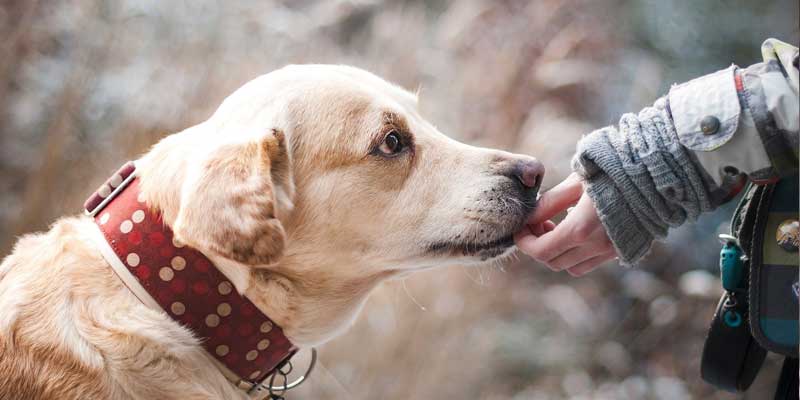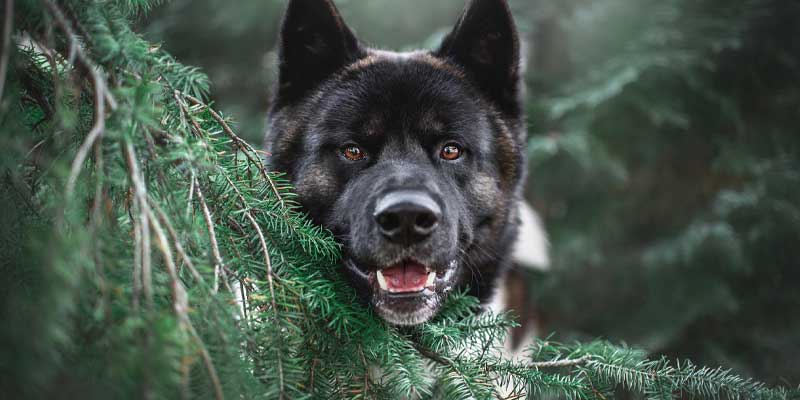
Do you know how dog years are calculated? It’s not as simple as multiplying a dog’s age by seven as a calculation is a little more complicated than that.
Best Selling Dog Treats
Last update on 2025-06-09 / Affiliate links / Images from Amazon Product Advertising API
If you are a dog parent, you already know that dogs mature more quickly as compared to humans. So, one year of a dog is equal to 7 human years. However, this is an old way to show that dogs age faster than humans. But today, modern science has developed a more precise way to calculate the dog’s age.
Here, you will find a step-by-step guide on how to calculate your dog’s age in human years. Using this knowledge, you can start planning for the various health issues your dog might face once they reach old age.
How to calculate a dog’s age in human years?

If you want to calculate your dog’s age in human years, you must follow the exact formula developed by the University of California researchers. They have studied how dog and human DNA changes with time by looking at methyl groups in Labrador Retrievers and humans.
Based on this research, you can easily calculate a dog’s age to human years. Just multiply the natural logarithm of the canine age by 16 and add 31.
Here is the formula looks like:
(human_age = 16ln(dog_age) + 31)
For iPhone users, you can use the “In” function easily. Just type the dog age, hit on “In, ” multiply it with 16 and add 31. But, if you are using a scientific calculator, first hit on “In”, type dog age, and equal it. After that, multiply it by 16 and add 31.
You may find this formula complex. For an easy peasy dog age calculation, you can use the dog age calculator.
For a more easy and accurate way, follow this methodology for dogs under 100 lbs.
The first year of a dog’s life is equal to 15 human years, the second year is 9 human years, and the additional years are 4-5 human years.
So, what makes this method more accurate than the one dog years = 7 human years?
All dogs are not the same, and all breeds don’t age the same way. It depicts that a 7-year-old Great Dane might be considered a senior dog, but that is not the same for Chihuahua or Pomeranian dogs.
Dog age chart calculator

Let’s break down a dog age chart in terms of size:
- Small dogs: 20 lbs
- Medium dogs: 20 to 50 lbs
- Large breeds: 51 to 100 lbs
- Giant: 100+ lbs
Have a look at the dog chart below to understand better the dog’s age based on the human years.
| Dog Size | Small | Medium | Large | Giant |
| Dog Age | Age in Human years | |||
| 1 | 15 | 15 | 15 | 12 |
| 2 | 24 | 24 | 24 | 22 |
| 3 | 28 | 28 | 28 | 31 |
| 4 | 32 | 32 | 32 | 38 |
| 5 | 36 | 36 | 36 | 45 |
| 6 | 40 | 42 | 45 | 49 |
| 7 | 44 | 47 | 50 | 56 |
| 8 | 48 | 51 | 55 | 64 |
| 9 | 52 | 56 | 61 | 71 |
| 10 | 56 | 60 | 66 | 79 |
| 11 | 60 | 65 | 72 | 86 |
| 12 | 64 | 69 | 77 | 93 |
| 13 | 68 | 74 | 82 | 100 |
| 14 | 72 | 78 | 88 | 107 |
| 15 | 76 | 83 | 93 | 114 |
Best Dog Toys
Last update on 2025-06-10 / Affiliate links / Images from Amazon Product Advertising API
How do dogs age?

As shown in the chart above, apart from the giant category, small, medium, and large dogs’ ages are much similar until they reach age six. However, the giant dog breeds age much faster than the small and medium canine breeds. A 7-year-old Dachshund will be 6 human years or younger as Airedale Terrier.
So, why is that?
Well, scientists and researchers are not sure why small dog breeds age slower and live longer than giant breeds. According to AKC, a few researchers hypothesize that giant dogs have more age-related issues, which is why they age quicker and longer for a few years. So, you can’t use one method to check your dog’s age as it can vary according to your pooch size and breed.
Common signs of aging in dogs

Now that you know how dog’s age, let’s learn about the common aging signs in dogs. So, how can you determine if your 4-legged buddy is getting old? Well, you can look at your dog’s age by looking at its physique and its behavior changes. The aging signs include:
- Worn out/ damaged teeth
- Gray hair
- Cloudy eyes and poor eyesight
- Hearing issues
- Stiff joints and muscles (arthritis)
- Lower activity level
- Other behavioral changes like (anxiety, irritability)
If you are not sure about the age of your 4-legged buddy, you can contact your vet. To give you a good age figure, they have all the basic records of your dog related to their age, i.e., teeth, body shape, hairs, eyes, etc.
Why do you need to understand your dog’s age?

You have to know the exact age of your dog to plan for its future health. When you have an older dog, it is much more complicated regarding the health issues that might arise in the next few years.
Take, for example, your Labrador Retriever, who is 10 years old and has arthritis. The fact that your dog is slowing down may seem alarming at the young age of 10
Many changes are occurring even faster in animals than they do in humans. That’s why it’s essential to protect their health and give them the right care at the right time. For example, as your dog gets older, they might lose their teeth, and you will have to provide them dental care.
You must not ignore other minor signs that can indicate a decline in your dog’s health, like stiff joints or hearing loss. If you start noticing these signs, you can provide better care for your dog’s overall well-being.
How to know the age of Adopted dog?

If you have adopted a dog, you can look for certain clues like their teeth to have a rough idea about their age. Here is how you can do that:
- By 8 weeks: They will have all their baby teeth.
- By 7 months: They will have all the permanent and clean teeth.
- By 1-2 years: Their teeth might get yellow, especially the back ones.
- By 3-5 years: Some tooth wear and tartar buildup
- By 5-10 years: May have disease signs.
- By 10-15 years: Worn teeth, heavy tartar buildup, and maybe a missing tooth.
Final Thoughts
Dogs age very differently than humans, and that’s why you need to know the exact age of your dog. You can use the age calculation method we mentioned above to know the exact age of your pooch. Knowing their exact age will help you plan for their future health. You must not ignore other signs that can indicate a decline in your dog’s health, like stiff joints or hearing loss. If you start noticing these signs, you can provide better care for your dog’s overall well-being.










